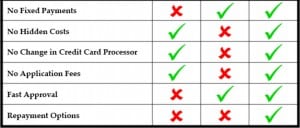 Parents paying student loans as the cost of post-secondary education continues to rise at alarming rates, because student debt has reached critical levels. As a result, many families are taking desperate measures to come up with the money, including maxing out their credit cards, risking their homes and retirement incomes, and resorting to subprime loans.
Parents paying student loans as the cost of post-secondary education continues to rise at alarming rates, because student debt has reached critical levels. As a result, many families are taking desperate measures to come up with the money, including maxing out their credit cards, risking their homes and retirement incomes, and resorting to subprime loans.
The Canadian Centre for Policy Alternatives reports:
- Annual fees at Canadian Universities are projected to rise 13% on average to $7,755, having almost tripled over the past 20 years.
- Students in Ontario can expect to shell out $9,483 on average in tuition and other compulsory fees in 2017-18. Fees in the province have nearly quadrupled over the last 20 years.
- The price tag for a university degree is significant: when books, living expenses and transportation costs are added to tuition and other compulsory fees, the cost of a four-year university education is estimated to reach over $80,000; of that, residence is estimated at about $31,000.
How many parents are ready and willing to go into debt to provide their child with a post-secondary education? Canadian parents paying student loans are willing to pay for two-thirds of their child’s total education costs, with 21% saying they’re prepared to foot the entire bill even if it means straining their finances, according to research by CIBC.
Credit Card Debt: According to a recent article in the National Post, the typical bank card interest rate continues to hover around 20% annually and department store cards are closer to 30%. It is never advisable to use your credit cards to pay for post-secondary education. Doing so may create a cycle of debt you may not be able to repay. Parents paying student loans through credit card debt must be avoided.
Risking Your Home or Retirement Income: Consider the possibility that something could happen, making it impossible for you to repay your debt. You could lose your home or sacrifice your retirement income. Can you afford to take that chance? Parents paying student loans cannot take precedence over fiscal prudence as parents near retirement.
Subprime Loans: Typically subprime loans are offered at a rate above prime to people who don’t qualify for prime rate loans because they have low credit scores or other factors that make them a high risk to default on debt repayment. Although the subprime loan’s additional points of interest don’t seem too drastic at first glance, they can add up to tens of thousands of dollars in additional interest over the life of the loan. Parents paying student loans should not do so by taking out subprime loans.
Should you borrow money to pay for your child’s post secondary education? Never max out your credit cards, risk your home or retirement income, and never resort to subprime loans. If you can borrow money in a way that doesn’t jeopardize your home, retirement and financial health, by all means, proceed. If your child is eligible for student loans, then a joint effort between the parents paying student loans and the student through part-time work may be one answer.
If you find yourself in debt for any reason including credit card debt or a subprime loan, contact Ira Smith Trustee & Receiver Inc. Debt should be dealt with as quickly and decisively as possible. Starting Over, Starting Now our team will come up with an action plan to restore your life to financial health as soon as possible.









